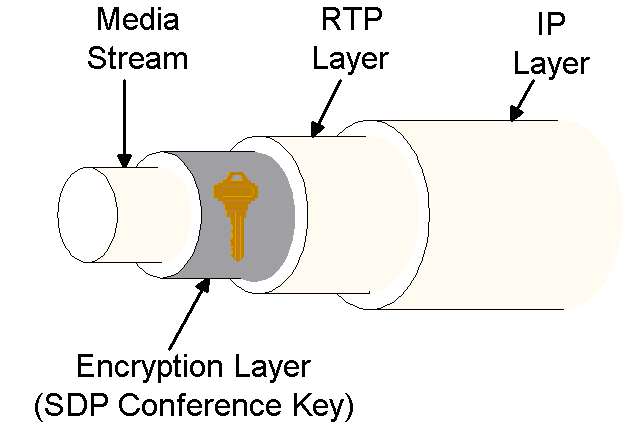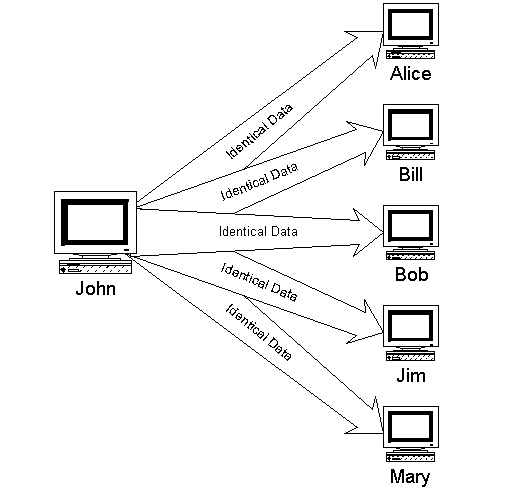
[This is preliminary documentation and subject to change.]
IP Multicast is an extension to IP that allows for efficient group communication. IP Multicast arose out of the need for a lightweight, scalable conferencing solution that solved the problems associated with real-time traffic over a datagram, "best-effort" network. There are many advantages to using IP Multicast: scalability, fault tolerance, robustness, and ease of setup.
The IP Multicast conferencing model incorporates the following key features:
Traditional connection-oriented conferencing suffers from a number of problems:
User complexity: Users must know the location of every user they wish to converse with, limiting scalability and fault-tolerance and rendering it difficult for users to add and remove themselves from a conference.
Wasted bandwidth: A user wishing to broadcast data to N users must send data through N connections, as shown in the following diagram:

The total bandwidth required for multiparty conferences in which all users are sending data goes up as N2 the number of parties involved, leading to huge scalability problems. IP Multicast takes advantage of the actual network topology to eliminate the transmission of redundant data down the same communications links.
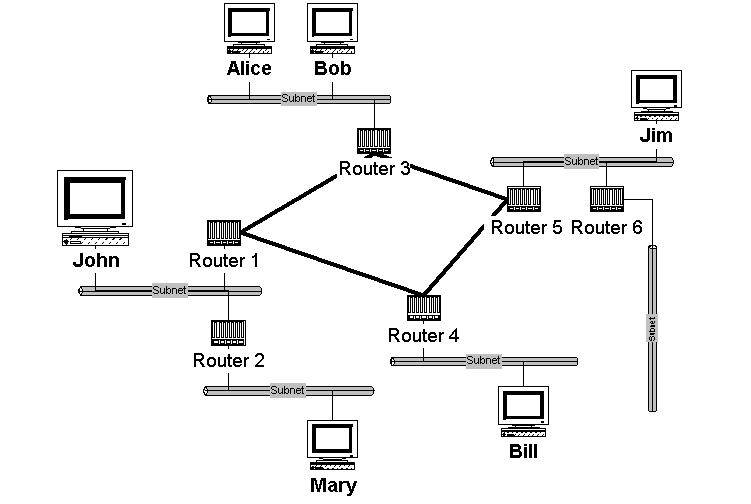
IP Multicast implements a lightweight, session-based communications model, which places relatively little burden on conference users. Using IP Multicast, users send only one copy of their information to a group IP address that reaches all recipients. IP Multicast is designed to scale well as the number of participants expands—adding one more user does not add a corresponding amount of bandwidth. Multicasting also results in a greatly reduced load on the sending server.
IP Multicast routes these one-to-many data streams efficiently by constructing a spanning tree, in which there is only one path from one router to any other. Copies of the stream are made only when paths diverge:
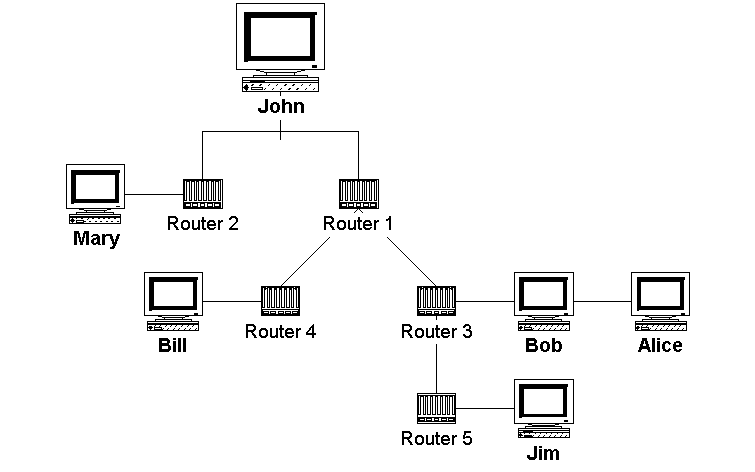
Without multicasting, the same information must either be carried over the network multiple times, one time for each recipient, or broadcast to everyone on the network, consuming unnecessary bandwidth and processing.
IP Multicast uses Class D Internet Protocol addresses to specify multicast host groups, ranging from 224.0.0.0 to 239.255.255.255. Both permanent and temporary group addresses are supported. Permanent addresses are assigned by the Internet Assigned Numbers Authority (IANA) and include 224.0.0.1, the "all-hosts group" used to address all multicast hosts on the local network, and 224.0.0.2, which addresses all routers on a LAN. The range of addresses between 224.0.0.0 and 224.0.0.255 is reserved for routing and other low-level network protocols. Other addresses and ranges have been reserved for applications, such as 224.0.13.000 to 224.0.13.255 for Net News (for more information, see RFC 1700, "Assigned Numbers" at ftp://ftp.internic.net/rfc/rfc1700.txt).
The transport protocol for IP Multicast is RTP (Real-time Transport Protocol), which provides a standard multimedia header giving timestamp, sequence numbering, and payload format information.
Applications for IP Multicast include video and audio conferencing, telecommuting, database and Web-site replication, distance learning, dissemination of stock quotes, and collaborative computing. At present, the largest demonstration of the capabilities of IP Multicast is the Internet MBONE (Multicast Backbone).
The MBONE is an experimental, global multicast network layered on top of the physical Internet. It has been in existence for about five years, and presently carries IETF meetings, NASA space shuttle launches, music, concerts, and many other live meetings and performances (for more information, see http://www.mbone.com).
The IP Multicast Conferencing TSP is chiefly responsible for resolving conference names to IP multicast addresses, using the Session Description Protocol (SDP) conference descriptors stored in the ILS Dynamic Directory Conference Server. It is complemented by the Rendezvous conference controls, described later in this document.
The IP Multicast Conferencing MSP is responsible for constructing an appropriate DirectShow filter graph for an IP multicast connection (including RTP, RTP payload handler, codec, sink, and renderer filters).
Architectural Diagram:
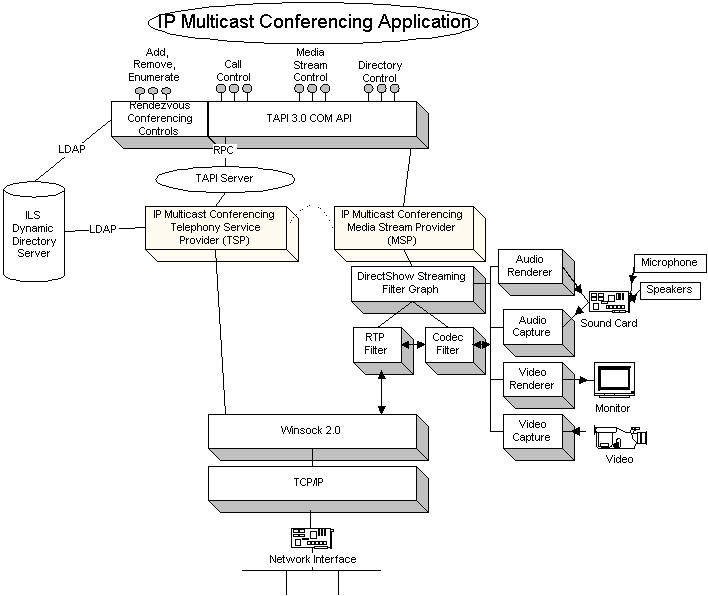
TAPI 3.0 uses the IETF standard Session Description Protocol to advertise IP multicast conferences across the enterprise. SDP descriptors are stored in the Windows NT Active Directory – specifically, in the ILS Dynamic Directory Conference Server. SDP is discussed in more detail later in this document. In contrast to the Dynamic Directory servers utilized by the H.323 TSP, there is only one ILS Conference Server per enterprise, since conference announcements are not continually refreshed, therefore consuming little bandwidth.
TAPI 3.0's IP multicast conference mechanism is illustrated in the following scenario, in which John wishes to initiate a multicast conference:
1. John's TAPI 3.0-enabled application utilizes the Rendezvous Controls (discussed in more detail later in this document) to create an SDP session descriptor on the ILS Conference Server. The SDP descriptor contains, among other things, the conference name, start and end time information, the IP multicast address of the conference, and the media types used for the conference.
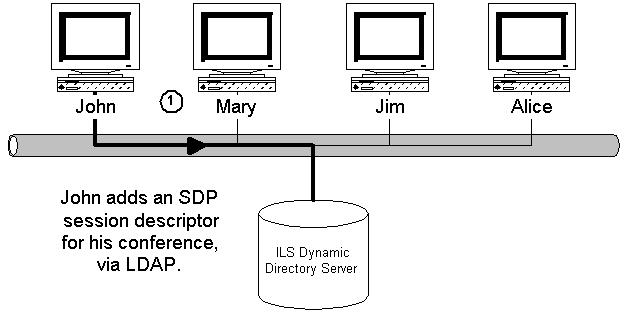
2. Jim queries the ILS Conference Server for SDP descriptors of conferences matching his criteria:
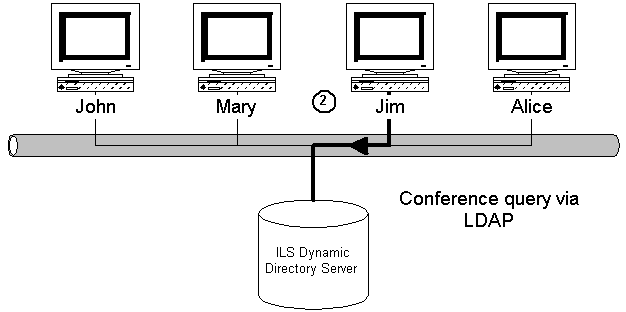
3. Mary and Alice perform similar queries and use the SDP information they receive to decide to participate in John's conference. Armed with the multicast IP address of the conference, they join the multicast host group:
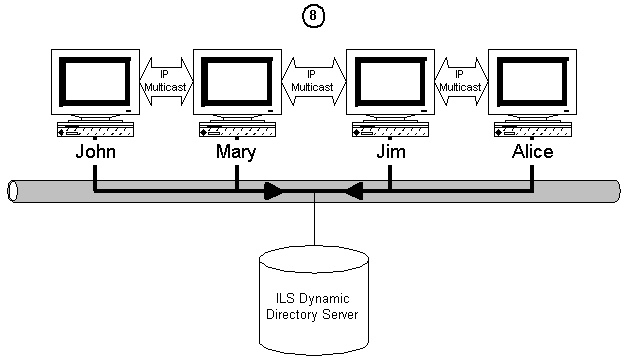
The Rendezvous Controls are a set of COM components that abstract the concept of a conference directory, providing a mechanism to advertise new multicast conferences and to discover existing ones. They provide a common schema (SDP) for conference announcement, as well as scriptable interfaces, authentication, encryption, and access control features.
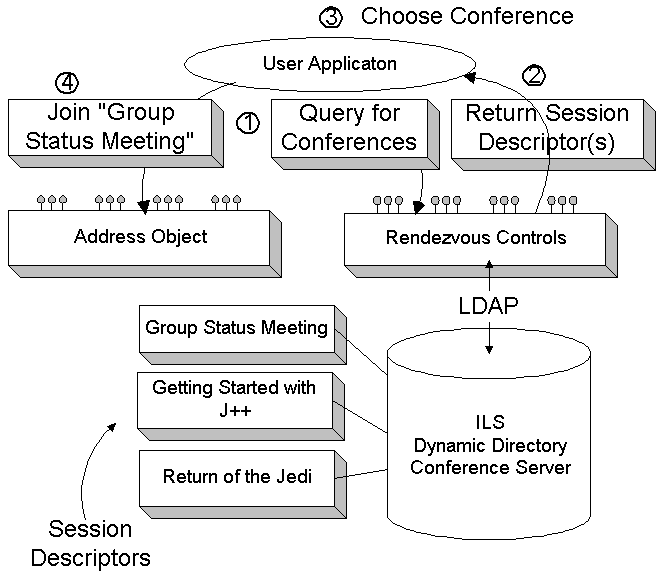
The user may add, delete, and enumerate multicast conferences stored on an ILS Conference Server via the Rendezvous Controls. These controls manipulate conference data via the Lightweight Directory Access Protocol (LDAP).
Joining a conference is illustrated in the diagram above. The conferencing application uses the Rendezvous Controls to obtain session descriptors for the conferences that match the user's criteria (1,2). Access control lists (ACLs) protect each of the stored conference announcements, and whether or not an announcement is visible and accessible depends upon the user's credentials.
Once the user has chosen a conference (3), the user application searches for all Address objects that support the address type "Multicast Conference Name." The application then uses the conference name from the SDP descriptor as a parameter to the CreateCall() method of the appropriate Address object (4), passes the appropriate Terminal objects to the returned Call object, and calls Call->Connect().
The Rendezvous Controls store the conference information on an ILS Conference Server in a format defined by the Session Description Protocol (SDP), an IETF standard for announcing multimedia conferences. The purpose of SDP is to publicize sufficient information about a conference (time, media, and location information) to allow prospective users to participate if they so choose. Originally designed to operate over the Internet MBONE (IP Multicast Backbone), SDP has been integrated by TAPI 3.0 with the Windows NT Active Directory, thereby extending its functionality to local area networks.
An SDP descriptor advertises the following information about a conference:
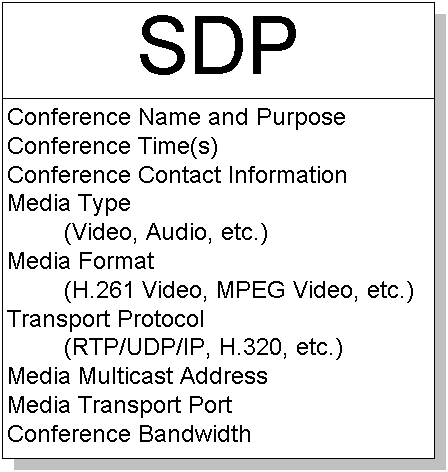
A session description is broken into three main parts: a single Session Description, zero or more Time Descriptions, and zero or more Media Descriptions. The Session Description contains global attributes that apply to the whole conference or all media streams. Time Descriptions contain conference start, stop, and repeat time information, while Media Descriptions contain details that are specific to a particular media stream.
While traditional IP multicast conferences operating over the MBONE have advertised conferences using a push model based on the Session Announcement Protocol (SAP), TAPI 3.0 utilizes a pull-based approach using Windows NT Active Directory services. This approach offers numerous advantages, among them bandwidth conservation and ease of administration. See the "Integration with Windows NT 5.0 Active Directory" subsection for details.
TAPI 3.0's conference security system addresses the following needs:
TAPI 3.0 utilizes the security features of the Windows NT Active Directory and LDAP to provide for secure conferencing over insecure networks such as the Internet. Each object in the Active Directory can be associated with an Access Control List (ACL) specifying object access rights on a user or group basis. By associating ACLs with SDP conference descriptors, conference creators can specify who can enumerate and view conference announcements. User authentication is provided by the Windows NT security subsystem.
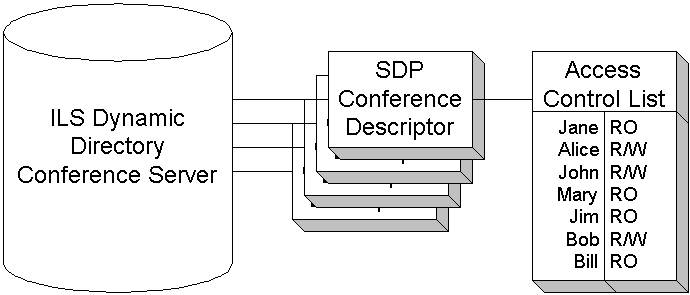
Session Descriptors are transmitted from the ILS Conference Server to the user over LDAP in encrypted form, via a Secure Sockets Layer (SSL) connection, ensuring that the SDP is safe from eavesdroppers:
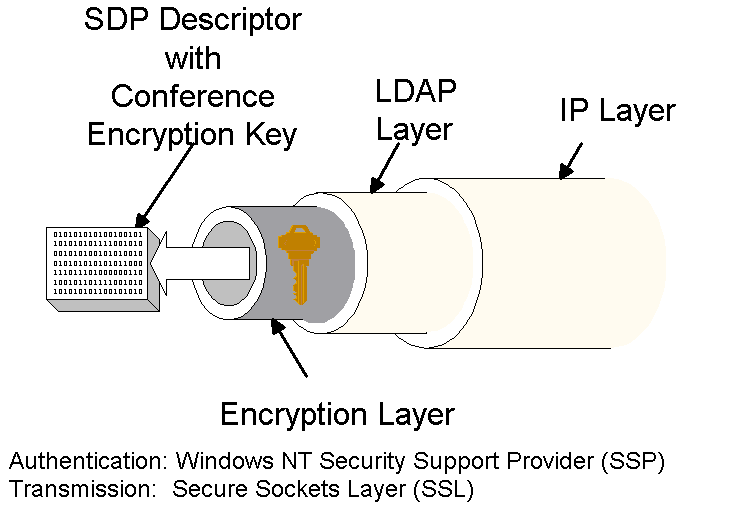
IP Multicast makes no provision for authenticating users - any user may anonymously join a multicast host group. To keep conferences private, TAPI 3.0 allows an IP multicast conference to be encrypted, with the encryption key distributed from within the conference descriptor. Only users with sufficient permissions have access to a conference's SDP descriptor, and therefore the Multicast Encryption Key. Once an authenticated user fetches the encryption key, he or she can participate in the conference.
